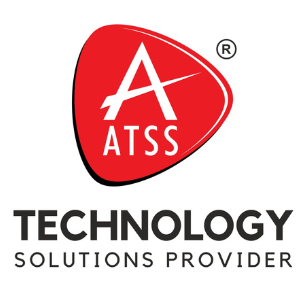The Future of Video Surveillance?

Agent Doug Carlin: “Can we go back?”
Agent Paul Pryzwarra: “No, there’s far too much data for an existing storage system.” 1
If you’ve ever seen the film Déjà Vu, you may remember these brief lines. Agent Doug Carlin, played by Denzel Washington, frantically asks video technicians to replay a key moment in the surveillance footage, but rewinding is not an option. Because the technology experts have found a way to create video footage of the past by manipulating the time-space continuum, no storage device is capable of storing the enormous loads of data.
The entire premise of the film pushes the limits of reality. But perhaps equally fascinating for storage technology professionals is the idea of having too much data for any existing storage device to contain. Hard drives today are designed to store vast amounts of data, but will these systems be sufficient for the ever-increasing storage demands of the video surveillance industry?
The Facts About Video Surveillance and Storage
Just how much storage does the video surveillance market require?
1 Based on historical camera shipments and the predicted lifespans of these devices, it is estimated that approximately 210,000,000 video surveillance cameras are currently deployed in digital systems worldwide.
2 Let’s assume that each of these cameras operates at industry-standard resolution, quality and frame-rate settings, recording 14 days worth of data. Even at these typical settings, over 18.4 billion gigabytes (GB) of storage is needed to support the world’s surveillance cameras for a mere two-week recording period. Furthermore, the number of hard drives needed to provide such storage capacity would stretch across China twice if laid end-to-end.
These statistics underscore the staggering growth of surveillance and storage technologies over the past 15 years. The amount of storage demanded by today’s surveillance systems for just a two-week time period is 880 times more than the entire capacity manufactured in the year 1995.
3 A fundamental enabler of this rapid growth has been the increased availability of cheap storage. While storage capacities have gone up, costs have gone down—dramatically. In 1995, one GB of storage cost roughly US$995; today, you can pick up a GB for a mere US$0.08.
4 Make it bigger, make it faster, make it cheaper.” The historic words of Al Shugart, founder of Seagate Technology, still reflect the goals of the data storage industry today. Increased capacities, improved performance and lower costs in storage technology are driving growth in global camera shipments. Research firm In-Stat forecasts over 41 million camera shipments for 2011 and more than 51 million by 2014.
5 In addition, the demand for higher megapixel resolutions is on the rise, and IP cameras are forecast to experience a compound annual growth rate of 13.7% over the next three years. What does this mean for the storage industry? More cameras + higher resolutions = increased storage needs.
Keeping Up With Storage Demands
To meet the constantly growing storage demands of the video surveillance market, hard drive manufacturers have faced the challenge of maintaining data integrity with magnetic coating technology that utilizes extremely small particles. In recent history, hard drive technology has been focused on increasing the areal density of storage media. Areal density is a measure of how closely individual bits of digital data (recorded on magnetic particles) fit together on a hard drive. The tighter the grouping of these bits, the higher the areal density. A measure of areal density is gigabits per square inch (Gbpsi). Increasing Gbpsi on a storage device allows capacity levels to increase.
The evolution of perpendicular recording has allowed experts to maximize Gbpsi by arranging bits vertically next to one another rather than horizontally, therefore driving higher Gbpsi. This technology has been the primary enabler of increased storage capacities over the last five years, but perpendicular recording has nearly reached maximum densities and is expected to peak at about one to 1.5 terabits (Tb) per square inch.6 It is becoming increasingly difficult to downsize technology while continuing to distinguish one bit from another. Striking a balance of creating ever-smaller magnetic particles while maintaining data integrity has presented new problems for the hard drive industry.
So what else can be done to increase storage capacities? Hard drive manufacturers are exploring a plethora of options to develop the next generation of storage technologies. The International Disk Drive Equipment and Materials Association (IDEMA) has recently mandated an increase in the basic sector size used on the media of hard drives.7 With the new Advanced Format 4K sector technology, a hard drive’s sector size changes from 512 bytes to 4096 (4K) bytes. Seagate Technology and other members of IDEMA support the adoption of 4K sector technology and see it as a key enabler of higher capacities and more robust error correction for the future.
A second key factor with potential to increase storage capacities is called track density, commonly measured by tracks per inch (TPI). Hard drives store data in concentric circles on the hard disk platters. When tracks are arranged tightly together, TPI and capacity are both maximized.
In the Seagate® Surveillance HDDs, TPI levels have gone from 250,000 in the previous generation to 340,000 today.8 These numbers represent a remarkable 36% increase in TPI and, consequently, a vast improvement in storage capacity. With such a high quantity of tracks on a mere 3.5-inch disk, each track is only 75 nanometers wide—about 100 times smaller than a single pollen spore. These tracks spin by a read-write head at 7200 RPM, while data is accurately recorded on an incrediblysmall scale.
What’s Next?
As perpendicular recording technology begins to reach its limits, track densities are also reaching their limits. Current technology cannot manufacture a read-write head capable of writing tracks any smaller. This is where Shingled Magnetic Recording, or SMR, comes into play.
SMR is a technology expected to emerge within the next few years that will further optimize TPI. This technology enables recording tracks to partially overlap like shingled roof tiles in order to increase track density. With SMR, each time a new track is recorded, the previous track is trimmed while the subsequent track is overwritten. This provides a potential 40% increase in capacity and also extends the use of perpendicular recording technologies.9 While not ideal for all types of data storage, SMR is quite applicable to video surveillance, as surveillance data is commonly overwritten after a set period of archival.
In the years to come, additional technologies will emerge in order to increase storage capacities and meet evolving storage demands. These technologies will continue to apply new methods for enhanced Gbpsi and
TPI and maximized areal density on storage devices. The cumulative effect of such technologies will help to make surveillance systems more costeffective, even with the increasing prevalence of high-definition recording capabilities.
Leveraging Hard Drive Technology for Video Surveillance
With the constantly growing demand for storage in the video surveillance industry, technologies that increase data capacities will continue to develop. Today and in the future, surveillance professionals must choose a hard drive that fits the needs of their specific surveillance system. While capacity is a key factor, there are other elements to consider when searching for a storage solution.
First, choosing a product that is designed for your specific workload and data category is crucial to enhancing performance, ensuring reliability and saving money.
As shown in Figure 1, storage requirements are vastly different across market segments. PC compute-related data requires storage biased for read capability and tuned for small-block, random data transfers. Within the consumer electronics market segment, hard drive designs must have smooth read capability focused on large-block, sequential data transfers.
In contrast, a video surveillance storage workload is heavily designed for writing, a function representing up to 95% of the hard drive’s operation. This high-write workload is combined with large, sequential data blocks from multiple data streams (cameras), which commonly operate in a 24×7 environment.

Figure 1. Storage requirements by market segment
Second, one size does not fit all in today’s surveillance applications. For this reason, it’s important to understand what your surveillance configuration calls for and what hard drive best fits your needs. Each of the following factors is crucial when sifting through the multitude of
surveillance storage options:
- Number of cameras, resolution, and duration of storage: capacity
- Type of configuration: JBOD or RAID?
- Drive count: high or low?
- Workload profile
Enclosure Design
The right hard drive can significantly influence a provider’s ability to offer outstanding surveillance systems with superior reliability, performance and affordability—all key elements to differentiate from competitors’ offerings. As shown by Figure 2, it is now possible to find
hard drives to meet the requirements of a broad variety of surveillance installations. Perhaps power efficiency and cool operation are your key priorities, or maybe you need high-speed video writing and streaming for multi-camera surveillance DVRs (SDVR). Your system may demand centralized storage tuned for operations in a typical IP and LAN environment. Regardless of the situation, there’s a specialized hard drive for the job.
Consumer DVR Applications
Hard drives designed for consumer Digital Video Recorders (DVRs) are often marketed as video surveillance solutions. While these products can be an acceptable solution for some configurations, such as low camera count, embedded surveillance DVRs, more sophisticated surveillance systems typically require more finely-tuned performance. A small embedded system can benefit from some of the low-power use and cool operation features of these types of hard drives, but will also sacrifice performance.

Figure 2. Hard drive solutions guided by specific surveillance application
Mainstream Surveillance DVR Storage
More conventional, mainstream SVDR configurations will usually support many surveillance camera inputs, demanding a higher-performance, purpose-built hard drive. Products like Surveillance HDDs, with 24×7 operation profiles and high-performance, large-block sequential tuning, are well-suited to handle HD DVR, SDVR, NVR and hybrid DVR/NVR systems. Look for hard drives with high-write capability—the hallmark of surveillance operations in relation to data storage.
Centralized Storage
In centralized storage architectures, rack mount storage and storage enclosures with high drive counts are common, and will be more so with the growing popularity of network-focused topologies. Nearline-class hard drives, which blend 24×7 high-write operation capabilities with the added benefits of enhanced RAID functionality and high- vibration tolerance, are a great choice for these architectures. Nearline drives also allow for the incorporation of more advanced storage technologies which utilize the SAS interface for higher performance and improved data reliability.
No Going Back
Surveillance systems may be a long way from using time-space continuum folding technology to look into the past, but the industry is undoubtedly growing at an extraordinary rate, and so are its storage demands. Current technology will only go so far in meeting these demands for increased storage capacities. While hard drive manufacturers continue to explore emerging opportunities to maximize data capacity, surveillance system designers must discern the best way to meet their present storage needs.
Understanding your system’s workload and data category is the first step, followed by choosing a hard drive that is purpose-built for your surveillance configuration. With a number of quality products on the market, surveillance professionals can find the hard drive that will optimize performance and save money.
As in Déjà Vu, there’s no going back. Storage needs of the past are long gone, and we can only move forward. But with an eye for evolving technology trends and a long history of success, surveillance systems will continue to protect and provide security for emerging economies around the world. You can be sure that storage will be a key element of these solutions.
—By David Burks, surveillance storage segment marketing

